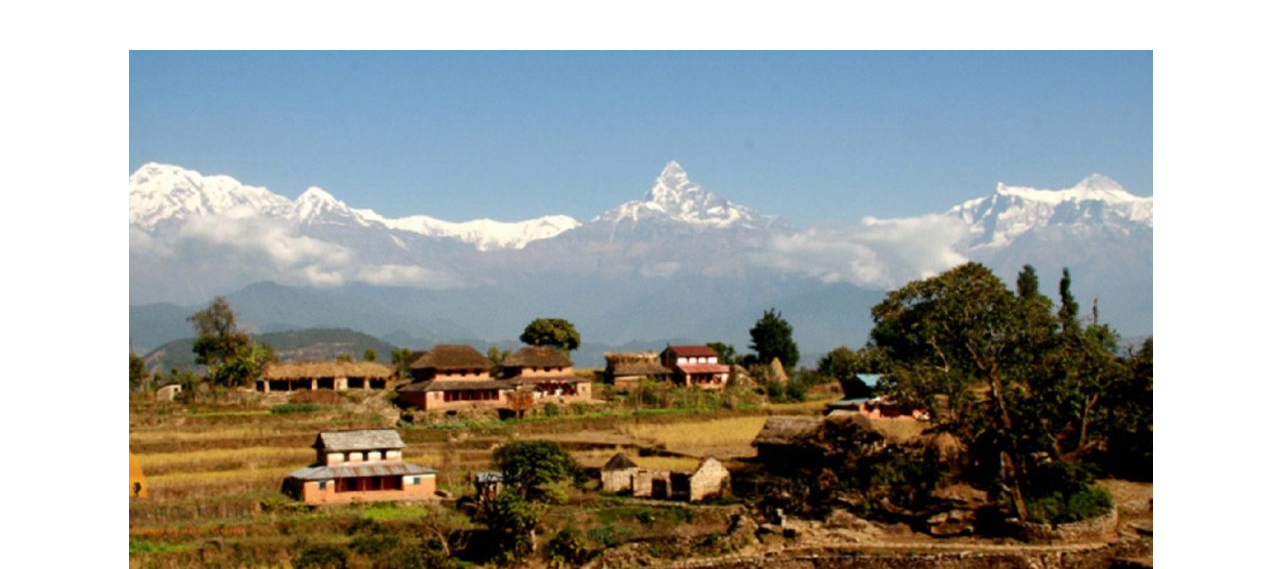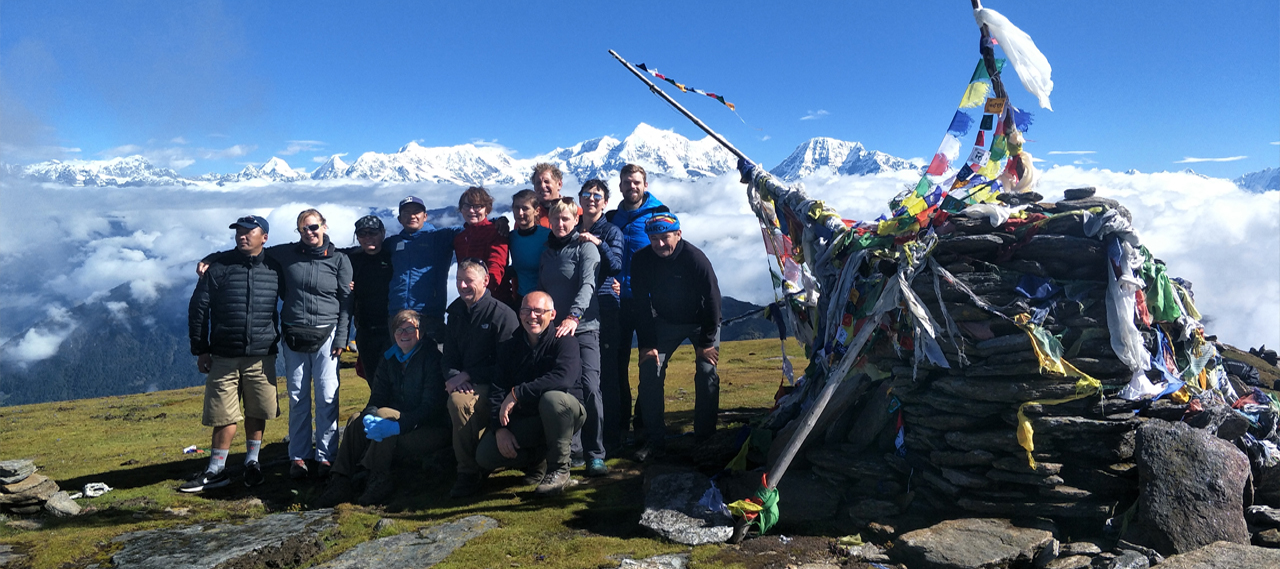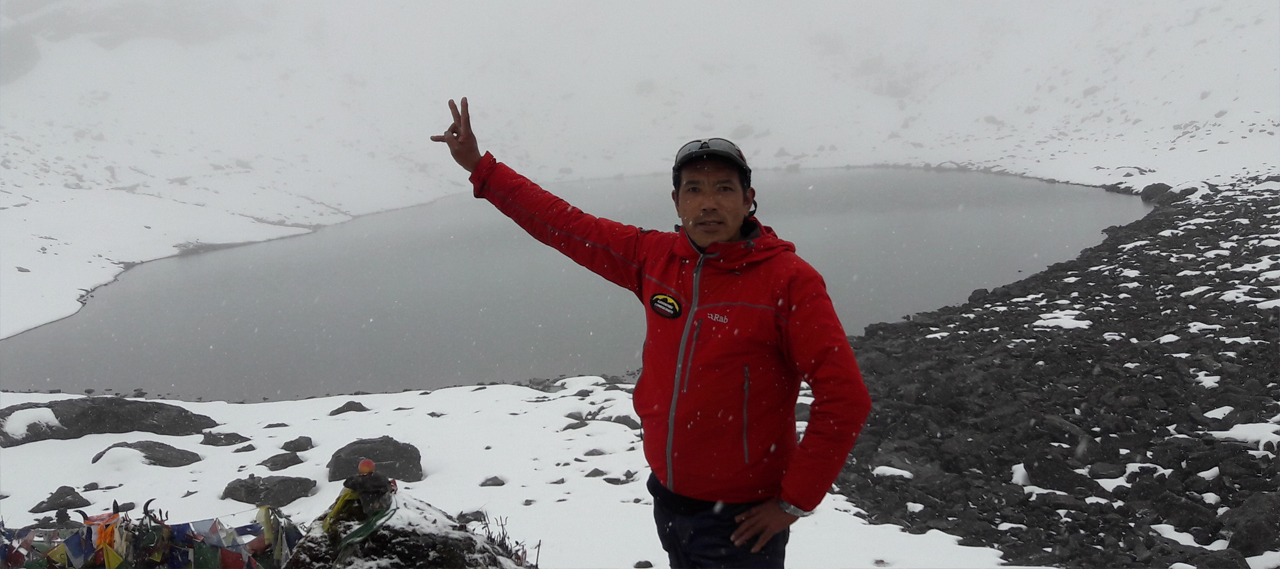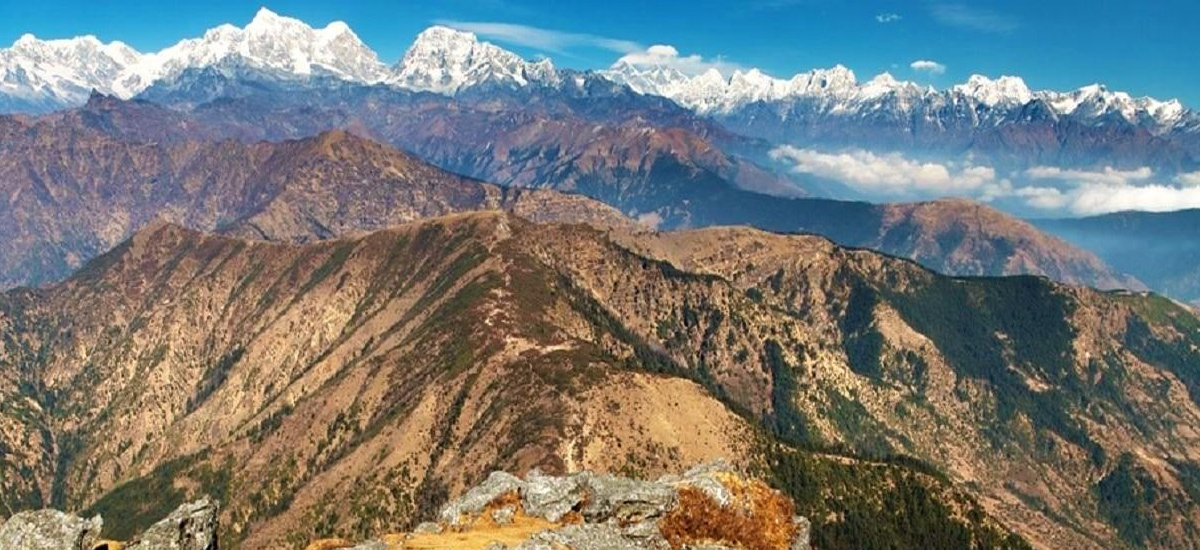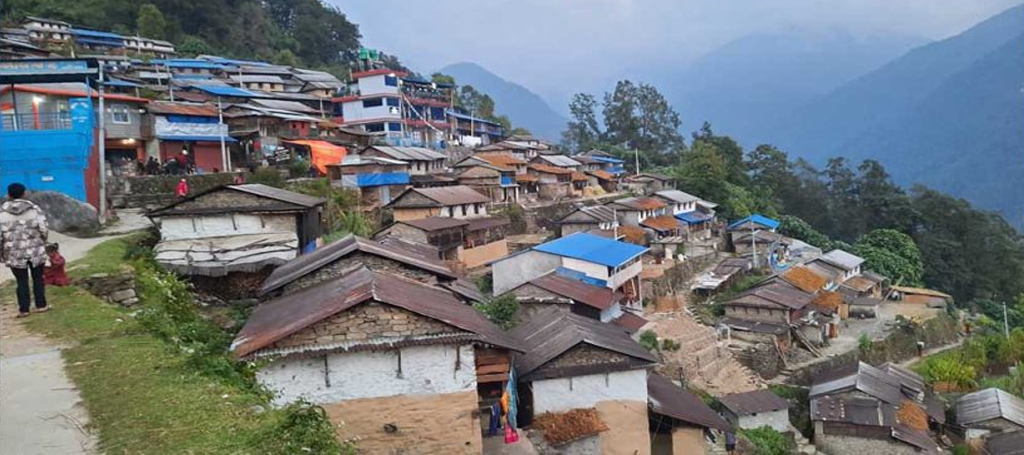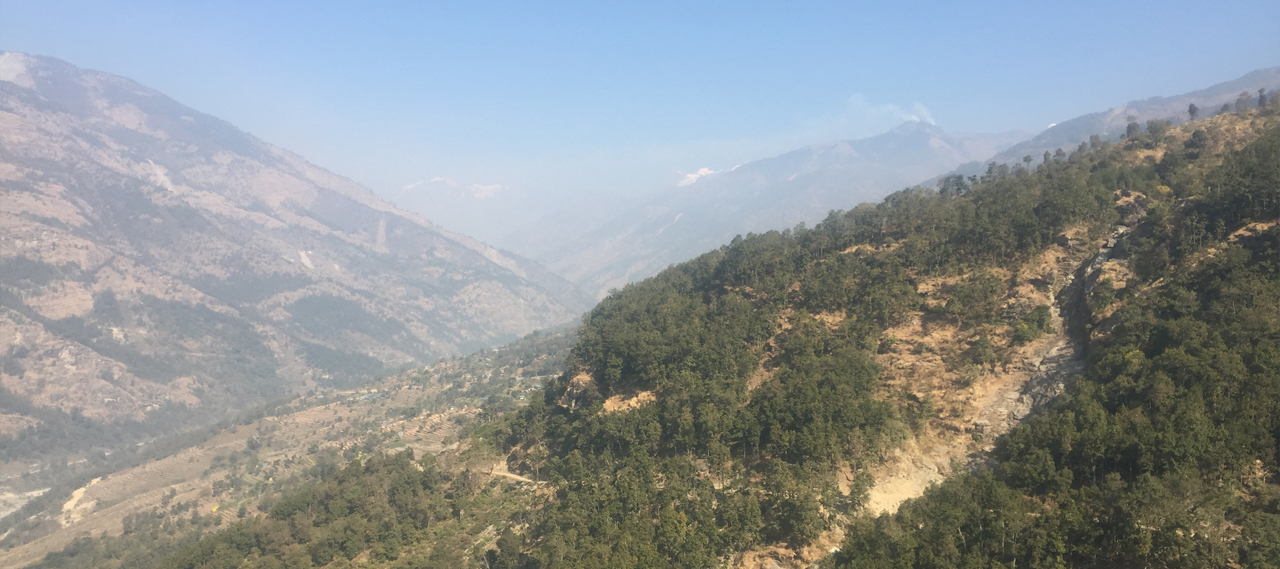Panchase Trek - 12 Days
Short & Easy Trek-
Duration
12 Days
-
Activity
Trekking
-
DifficultyEasy Trek
These treks are suitable for beginners or those with limited time or physical fitness. The routes are generally short and do not exceed an altitude of 3,000 meters. The trails are well-maintained and relatively flat, and the terrain is not too challenging.
-
Max. Altitude
2500 m
-
Starts
Kathmandu
-
Ends
Kathmandu
-
Group Size
Minimum: 2 pax
-
Best Season
March-May/Sept-Dec
PRICE PER PERSON
- 1 PAX US$663
- 2 PAX US$575
- 3 PAX US$540
- 4 PAX US$532
- 5-10 PAX US$518
- 11-20 PAX US$511
- Highlights
- Itinerary
- What Included / Excluded
- Dates & Availability
- Additional Information
TRIP HIGHLIGHTS
- Stunning views of the Annapurna and Dhaulagiri mountain ranges, including peaks like Machhapuchhre (Fishtail), Annapurna I, Annapurna South, and Dhaulagiri.
- Enjoy a 360-degree view of the surrounding mountains, valleys, and lakes.
- Opportunity to interact with the local communities of traditional Gurung, Magar, and Brahmin villages, allowing you to experience their unique culture, traditions, and way of life.
- Visit ancient temples, monasteries, and sacred sites, witnessing the religious practices and rituals of the locals.
- Encounter various species of birds, including Himalayan pheasants, eagles, and vibrant butterflies.
- Explore the natural diversity of the Annapurna foothills.
- Panchase Hill summit offers breathtaking views during sunrise and sunset, witnessing the first rays of sunlight painting the mountains in golden hues.
Notice: Undefined index: titleWrapper in /home/tthimalaya/public_html/wp-content/plugins/seo-by-rank-math/includes/modules/schema/blocks/toc/class-block-toc.php on line 103
Panchase Trek Overview

The Panchase trek is a relatively easy and picturesque trek that serves as a wonderful introduction to the Annapurna mountain region, commencing in the enchanting town of Pokhara, nestled on the shores of the scenic Lake Phewa. Along the trail, trekkers are greeted with breathtaking vistas of prominent Himalayan peaks, including Macchapuchare, Dhaulagiri, Annapurna, Lamjung, and Manaslu. The region is also known for its abundant birdlife and diverse fauna, adding to the natural allure of the trek.
As the trek begins, it heads southwest before looping north into the Annapurna Conservation Area, traversing subtropical valleys adorned with rice fields, and ascending to the high ridges embraced by rhododendron forests. The Panchase area is renowned for its rich biodiversity, housing a wide variety of birds and animals, providing nature enthusiasts with an exceptional experience.
What sets the Panchase trek apart is its ability to take trekkers off the beaten path and provide an opportunity to explore the diverse cultures of the region. Throughout the journey, trekkers encounter villages inhabited by the Gurung, Brahmin, and Magar communities, each with their unique traditions and way of life. Taking a day of rest in Ghaundrung, the largest Gurung village in the area, allows trekkers to immerse themselves in the local culture and relish the fabulous views of Annapurna, Macchapucchare (Fishtail), and Himchuli.
Starting from the idyllic Pokhara, situated on the shores of the picturesque Lake Phewa, this relatively simple hike serves as an excellent gateway to the Annapurna mountain range. The trail meanders from the southwest before turning north, guiding trekkers through subtropical lowlands, rice paddies, and eventually reaching the pristine slopes of rhododendron forests. The region of Panchase is home to an array of bird species and diverse wildlife, providing ample opportunities for nature enthusiasts to appreciate the natural splendor.
Moreover, the Panchase trek offers a unique experience by venturing off the well-trodden paths, allowing trekkers to immerse themselves in the vibrant cultures of the area. The journey provides a glimpse into the lifestyles and traditions of the Brahmin, Magar, and Gurung communities. Taking a day’s respite in Ghaundrung, the largest Gurung settlement nearby, offers trekkers a chance to rejuvenate while relishing the magnificent vistas of Himchuli, Macchapucchare, and Annapurna.
In conclusion, the Panchase trek presents a relatively easy yet captivating trekking experience, serving as an excellent introduction to the mesmerizing Annapurna mountain region. With its stunning natural landscapes, diverse flora and fauna, and encounters with vibrant local cultures, the trek offers a remarkable adventure that unveils the true beauty of the Himalayas. Starting from Pokhara, this trek takes trekkers through scenic valleys, verdant forests, and charming villages, culminating in awe-inspiring views of the Annapurna, Macchapucchare, and Himchuli peaks.
Table of Contents
Culture of Panchase Trek:
Trekkers traveling through traditional villages and holy places on Nepal’s Panchase Trek can get an intriguing look at the region’s rich cultural legacy. Trekkers will pass through villages home to a variety of ethnic groups, such as the Gurung, Magar, and Brahmin populations, each of which adds its own customs, dialects, and traditions to the region’s rich cultural fabric. Trekkers get to see these villages’ everyday lives, which are marked by lively religious rituals, traditional festivals, and agricultural traditions. The Gurung people, who are renowned for their martial traditions and rich cultural legacy, frequently extend warm hospitality to hikers and provide them with insights into their distinctive way of life.
In order to improve the cultural experience, the Panchase Trek includes a number of religious and cultural landmarks. The holy Panchase Danda (hill), which is treasured by pilgrims who practice Buddhism and Hinduism, is one of the highlights. Trekkers can explore historic shrines and temples at the peak, such as the Pancha Devata (Five Gods) temple, where worshippers give sacrifices and offer prayers. Trekkers may come across vibrant prayer flags, chortens (stupas), and monasteries along the way that represent the local communities’ spiritual customs and beliefs. The Panchase Trek is a genuinely fascinating cultural experience in the heart of Nepal because it combines breathtaking landscapes, spiritual monuments, and cultural encounters.
Biodiversity Panchase Trek:
Trekkers on the Panchase Trek will see a variety of environments, from verdant forests to mountain meadows, and a wealth of biodiversity. A vast range of plants and animals may be found in the Annapurna Conservation Area, which is traversed by the journey. At lower elevations, the environment is dominated by dense forests of pine, oak, and rhododendron trees. These forests serve as habitat for a variety of plant species, including ferns and orchids. Diverse wildlife, including deer, bird species, and langur monkeys, can be found in these forests.
Trekkers see alpine meadows in the spring and summer, when the trail reaches higher altitudes, full of vibrant wildflowers. Along with smaller mammals like pikas and martens, this ecosystem is home to grazing animals like Himalayan thars and yaks. A multitude of bird species, such as the colorful Himalayan Monal and multiple pheasant species, will be visible to birdwatchers. The Panchase Trek’s visual beauty and biodiversity are enhanced by the trek’s panoramic vistas of the surrounding Himalayan ranges. Overall, the trek provides a superb opportunity to immerse oneself in the natural beauty of the Annapurna region while experiencing its rich biodiversity.
Climate of Panchase Trek:
The climate along the Panchase Trek varies significantly with the changing seasons and altitude, offering trekkers a diverse range of weather conditions throughout their journey. During the spring and autumn seasons, which are considered the best times for trekking, the weather is generally mild and stable. Spring, from March to May, brings warm temperatures ranging from 10°C to 20°C (50°F to 68°F) during the day, with blooming rhododendrons adding vibrant colors to the landscape. Autumn, from September to November, offers clear skies and moderate temperatures similar to spring, making it ideal for trekking with daytime temperatures ranging from 10°C to 20°C (50°F to 68°F).
Trekkers should be ready for temperature swings and sporadic showers, particularly in the afternoon and evening. On the other hand, the region experiences intense rainfall during the summer monsoon season, which runs from June to August, turning the routes into muddy and difficult terrain. Hikers should prepare for excessive humidity and temperatures between 15°C and 25°C (59°F and 77°F) during this period.
The rainy season is not ideal for trekking because it also brings with it the risk of landslides and leeches. The winter months of December through February provide cooler weather, particularly at the trek’s higher altitudes.2°C to 10°C (36°F to 50°F) can be the range of daytime temperatures, with nights frequently falling below freezing. Snowfall is a possibility, especially at higher elevations, which makes the climb more difficult but also presents serene, snow-covered scenery to intrepid hikers.
Accommodation in Panchase Trek:
Trekkers can choose from a number of lodging alternatives along the Panchase Trek to suit their interests and budgets, from rudimentary tea shops to more luxurious lodges. Trekkers can discover basic tea houses managed by local families in the villages and towns along the trail. These establishments provide comfortable twin-bed rooms with communal bathroom facilities. Even with their basic amenities, these tea houses provide hikers a cozy and genuine experience that lets them fully immerse themselves in the native way of life. Trekkers can gain nutrition and a taste of traditional mountain cuisine from the robust Nepali dishes like vegetable curry and dal bhat, which are frequently offered in communal dining rooms.
As trekkers progress along the route, they may also encounter more established lodges and guesthouses, particularly in larger villages or popular trekking destinations. These lodges often offer more comfortable accommodations with private rooms and attached bathrooms, as well as additional amenities such as hot showers and Wi-Fi access. The dining options at these lodges are typically more varied, with menus featuring both Nepali and international cuisines to cater to diverse tastes. Regardless of the type of accommodation chosen, trekkers can expect warm hospitality and stunning mountain views throughout their journey on the Panchase Trek.
Meals:
During the trek, “Touch the Himalayas” takes care of your meals, providing nutritious and delicious food to keep you energized. You can enjoy a variety of meals, including traditional Nepali dishes and international cuisine. Breakfast, lunch, and dinner are usually included, with options such as rice, dal (lentil soup), vegetables, noodles, soups, and more. Special dietary requirements can be accommodated upon prior request.
Guides:
“Touch the Himalayas” provides experienced and knowledgeable guides who are well-versed in the Panchase region. These guides offer valuable insights into the local culture, history, and natural surroundings. They ensure your safety, navigate the trails, and help you make the most of your trekking experience. The guides are familiar with the route, landmarks, and local customs, making your journey more enjoyable and informative.
Permits for Panchase Trek:
“Touch the Himalayas” takes care of the necessary permits required for the Panchase Trek. This includes the Annapurna Conservation Area Permit (ACAP) and any other permits needed to enter restricted areas or conservation zones. The team will handle the paperwork and logistics, ensuring that you have the required permits before starting your trek.
All the trip grading can be view here.
If you have any confusion for booking process please visit our booking process.
Itinerary
Welcome at Tribhuvan International Airport, then transfer to your hotel.
Trek Preparation and Kathmandu Sightseeing
Drive or fly to pokhara
Trek to Bhumdi (3-4 hours walking)[1520m]
Trek to Bhanjyang (5-6 hours of walking) [2030m]
Hike to the Panchase Hill summit (6-7 hours of walking) [2,500 m]
Trek to Matathanti [1200m]
Easy walk to Ghaundrung, the largest Gurung village in the region
Start off on a downward slope to Modi Khola, Landrung Village, Deurali, and Pothana, where we spend the night after walking for 5 to 6 hours .
You may get there by walking to Damphus, along the ridge to Phedi, past villages and rice fields, and then on to Pokhara.
Fly or drive back to Kathmandu
Departure Flight Back to Say Goodbye and good and safe journey
Itinerary Note:
This itinerary is just the guide line, it can be changed (longer or shorter) as per our client's wishes, fitness, ground reality and weather condition. If you're not satisfied or have an alternative plan please feel free to discuss it with us By Clicking :- ASK QUESTION or COSTOMIZE YOUR TRIP.What's Included / Excluded
Cost Incluldes
- Airport pick up and drop off by Car, jeep, Hiace or Bus. Depends on the number of arrives.
- Complimentary welcome or farewell dinner according to the suitability of our client’s time.
- Beginning two nights stay on arrival in Kathmandu in tourist standard hotel with breakfast included (twin share basis)
- Two nights hotel in Pokhara with breakfast (Before and after the Trek) twin sharing basis.
- Kathmandu-Pokhara- Kathmandu by tourist bus, Pokhara to Thulo Khola (trekking starting point) and after end the trek from Phedi to Pokhara by Private vehicle.
- All necessary trekking and area permit & fees, (National Park area special permit and TIMs cards).
- Three meals a day during the trek (Breakfast, Lunch and Dinner )
- All accommodation during trek ( in the best Local Tea house or in the guest house available in shelter)
- An experienced, English-speaking, government-licensed, first aid trained trekking guide and assistant guide (if the group size over 8 trekkers: 1 assistant guide)
- Expert local porters (2 trekkers: 1 porter)
- Duffel bag, (to be returned after trip completion), complementary trekking maps. If needed down jacket and sleeping bag will be provided in rent.
- Staff costs including their salary, insurance, Equipment, transport, food and accommodations
- Rescue arrangements if necessary.
- Basic First-aid kit (carried by trekking guide)
- All government and local taxes for Trekking, Agency service charge and government tax/vat.
- Achievement Certificate
Cost Excludes
- International airfare and Nepal visa fee.
- Lunch and Dinner in Kathmandu and pokhara
- Extra night accommodation in Kathmandu because of early arrival, late departure, early return from mountain (due to any reason) than in the scheduled itinerary
- Personal insurance which covers medical, emergency evacuation, loss or theft of property.
- Personal gears and equipment.
- Personal expenses such as laundry, hot showers, battery charging, Wifi, etc
- Entry fees and costs in sightseeing (temples, monasteries, etc)
- Tips and gratitude provided to guide and porter.
Fixed Departure
Can't find trip as your Schedule Date?
- Above mentioned departure dates “AVILABLE”‘ means these dates are currently open for bookings for the particular Trek. If the mentioned dates are not suitable with your preferred date, you can make your own private trip by clicking the box billow in the bottom.
- A date “GUARANTEED” means that we give guarantees that the costumers will be able to start theirs trek on the specified date, regardless of whether the seats are fully booked or not.
- “LIMITED”‘ Status refers to a type of seats booking for the trek, that has been certain seats available to book
- In the status, “CLOSED” means that the Trekkers seats are fully booked and there are no more seats available for new booking. Trekkers may be put on a waitlist for a chance to get a seat if there are cancellations unless your are requested to plan your own private trip by clicking the box billow in the bottom.
Additional Information

